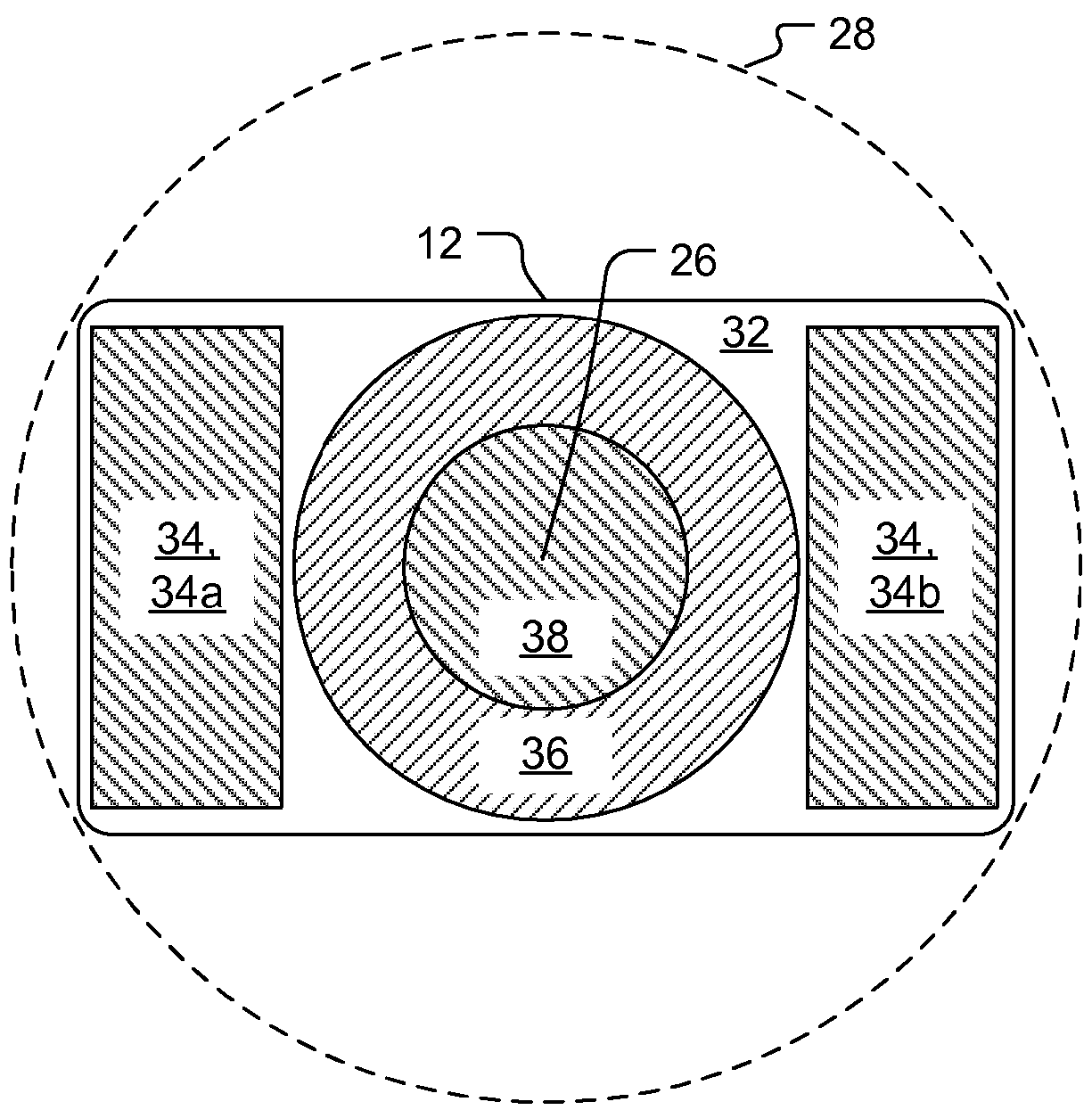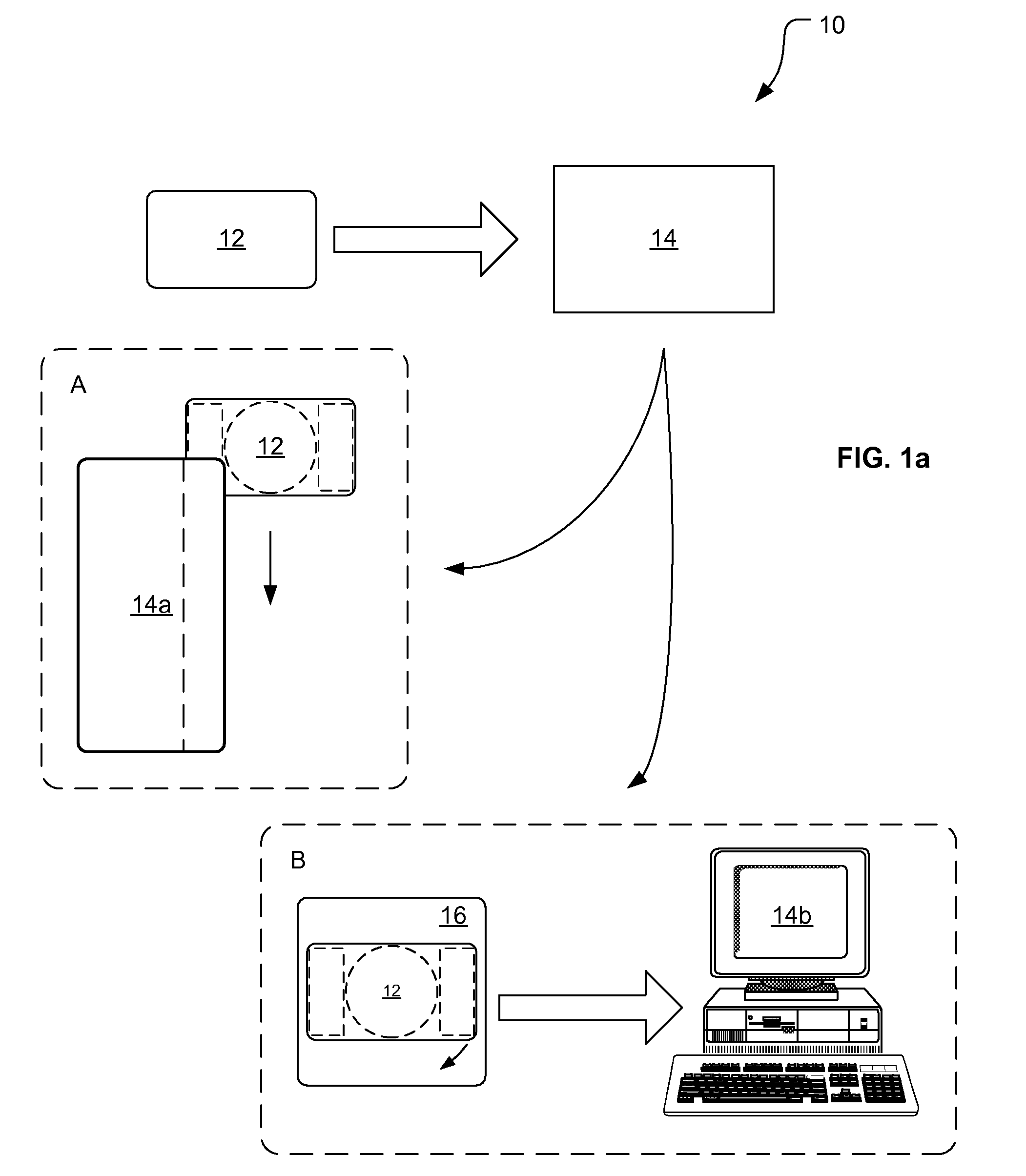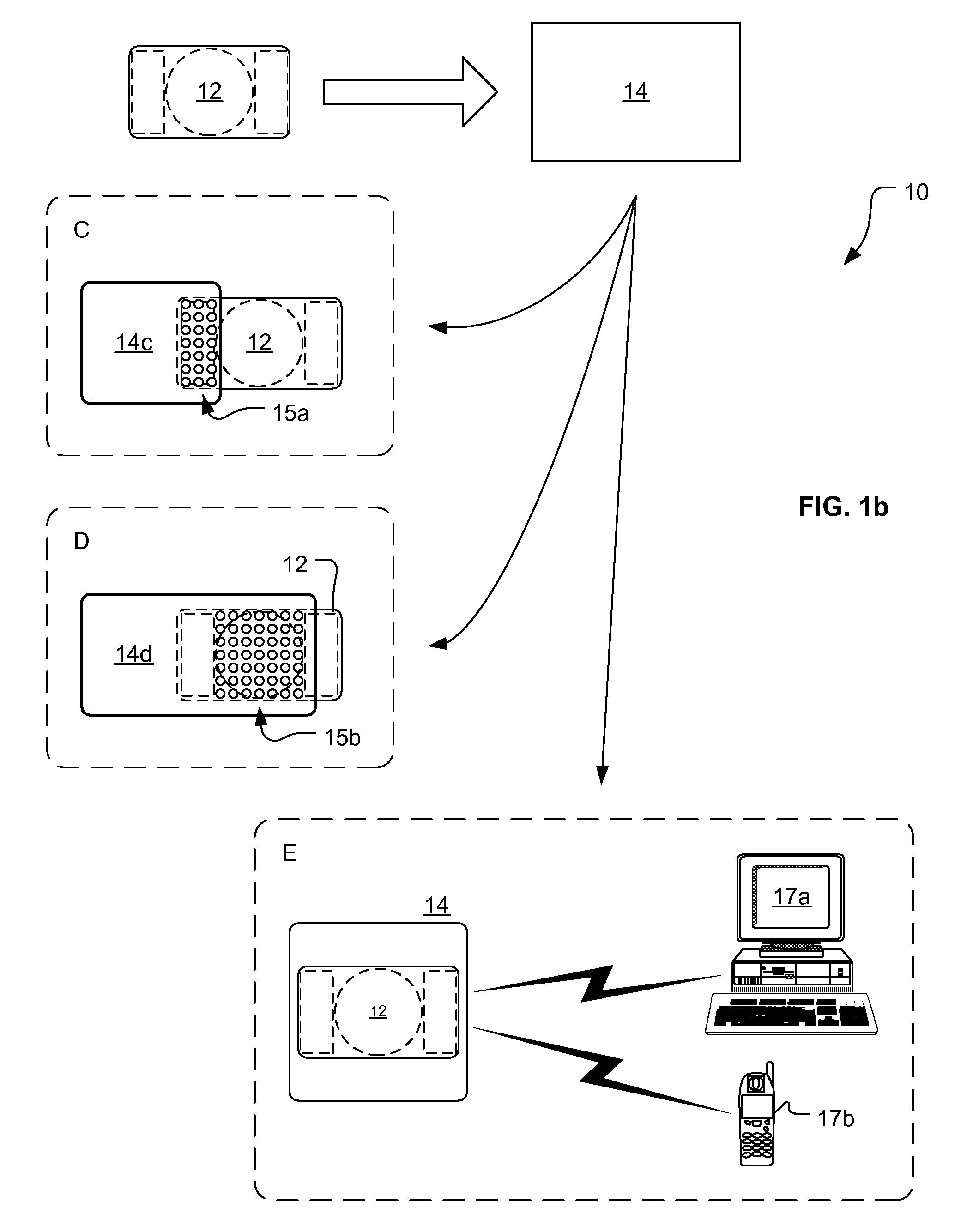Information card system
a card and information technology, applied in the field of dynamic magnetic information storage or retrieval, can solve the problems of insufficient data teaching or suggestion, card technology has not evolved, business or calling card has not proved quite cost-effective, etc., and achieves the effect of encouraging their ready and wide distribution and use, small size, and easy and inexpensive manufacturing
- Summary
- Abstract
- Description
- Claims
- Application Information
AI Technical Summary
Benefits of technology
Problems solved by technology
Method used
Image
Examples
Embodiment Construction
[0030]A preferred embodiment of the present invention is a system for distributing data. As illustrated in the various drawings herein, and particularly in the view of FIG. 1a-b, a preferred embodiment of the invention is depicted by the general reference character 10.
[0031]FIG. 1a-b are block diagrams depicting the major elements of various exemplary embodiments of the data distribution system 10 in accord with the present invention. As presented therein, the data distribution system 10 can generally employ an information card 12 and a reader 14 for reading data magnetically stored on the information card 12. The reader 14 may read data by moving the information card 12 linearly as depicted by insert A in FIG. 1a. When this is the case, the reader 14 is herein termed a linear reader 14a. Alternately, the reader 14 may read data by rotating the information card 12 as depicted by insert B in FIG. 1a. When this is the case, the reader 14 is herein termed a rotary reader 14b. To read t...
PUM
| Property | Measurement | Unit |
|---|---|---|
| current position | aaaaa | aaaaa |
| rectangular shape | aaaaa | aaaaa |
| size | aaaaa | aaaaa |
Abstract
Description
Claims
Application Information
 Login to View More
Login to View More - R&D
- Intellectual Property
- Life Sciences
- Materials
- Tech Scout
- Unparalleled Data Quality
- Higher Quality Content
- 60% Fewer Hallucinations
Browse by: Latest US Patents, China's latest patents, Technical Efficacy Thesaurus, Application Domain, Technology Topic, Popular Technical Reports.
© 2025 PatSnap. All rights reserved.Legal|Privacy policy|Modern Slavery Act Transparency Statement|Sitemap|About US| Contact US: help@patsnap.com



